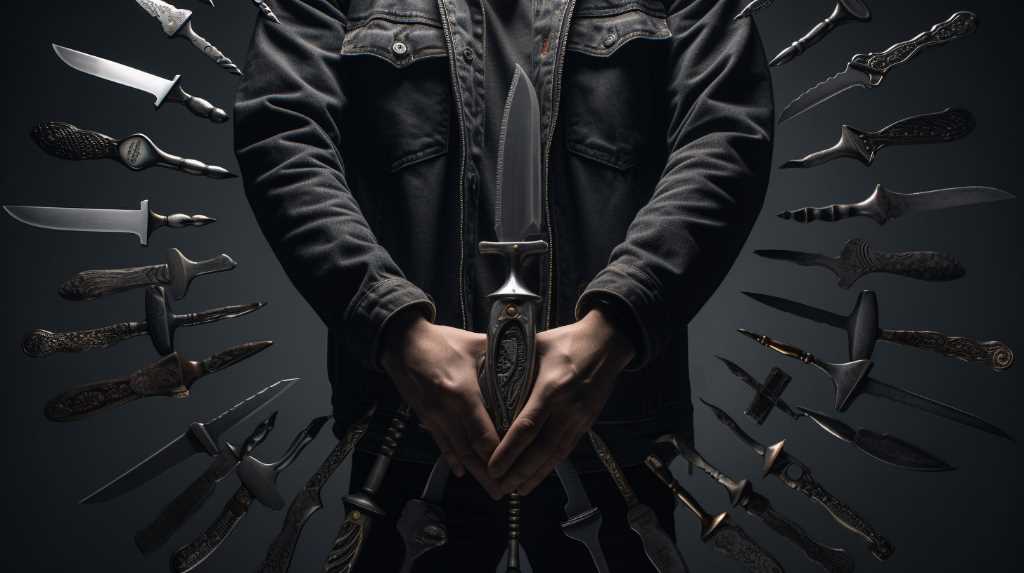
In the realm of throwing knives, choosing the right weapon for the task at hand can be a captivating challenge.
However, a misstep in this selection can lead to suboptimal results and potential hazards.
To assist you in avoiding these pitfalls, this article delves into the common mistakes one must sidestep when selecting throwing knives.
From oversized blades to poorly constructed handles, we aim to provide knowledgeable, precise, and detailed guidance to help you achieve the desired liberation in your throwing knife endeavors.
Key Takeaways
- Avoid using oversized knives as they hinder accuracy and control during throwing.
- Choose throwing knives with proper balance to ensure stability and accuracy.
- Prioritize knives with lightweight handles for improved maneuverability and reduced fatigue.
- Select throwing knives with sharp, well-defined tips to maximize accuracy and performance.
Oversized Knives
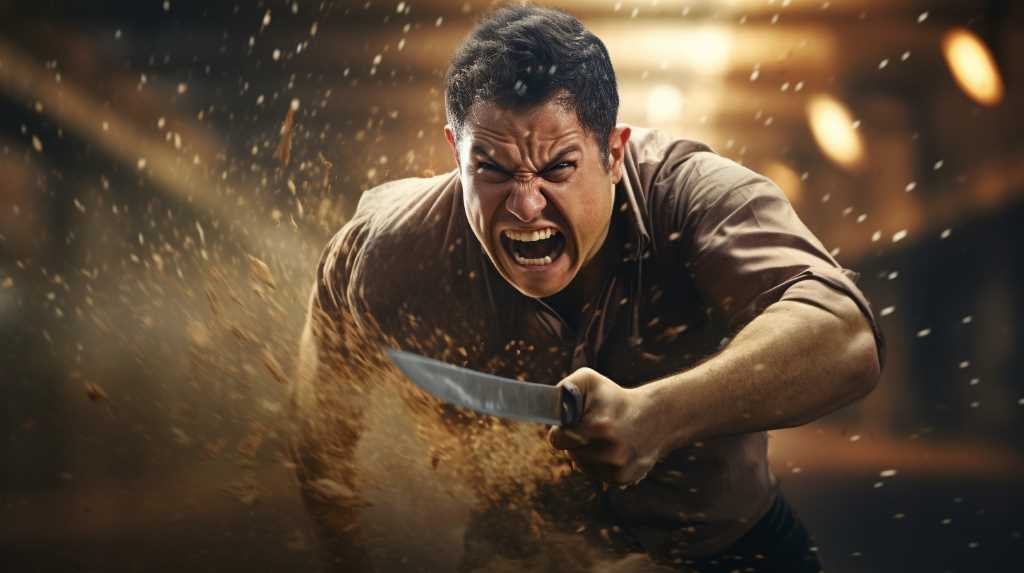
Interestingly, oversized knives can pose a significant challenge in terms of accuracy and control during throwing knife selection. While they may seem appealing due to their intimidating size, these knives can actually hinder a thrower's ability to hit their intended target consistently.
The larger size of the knife makes it more difficult to control the rotation and trajectory of the throw, leading to inconsistent results. Additionally, the weight distribution of oversized knives can be problematic, as it can throw off the balance and stability of the knife during flight. This can further impact accuracy and make it difficult to predict where the knife will land.
Therefore, it is advisable for throwers to opt for knives that are specifically designed for throwing, with a size and weight that allows for optimal control and accuracy. By selecting the right knife, throwers can enhance their skills and achieve greater liberation in their throwing knife endeavors.
Improper Balance
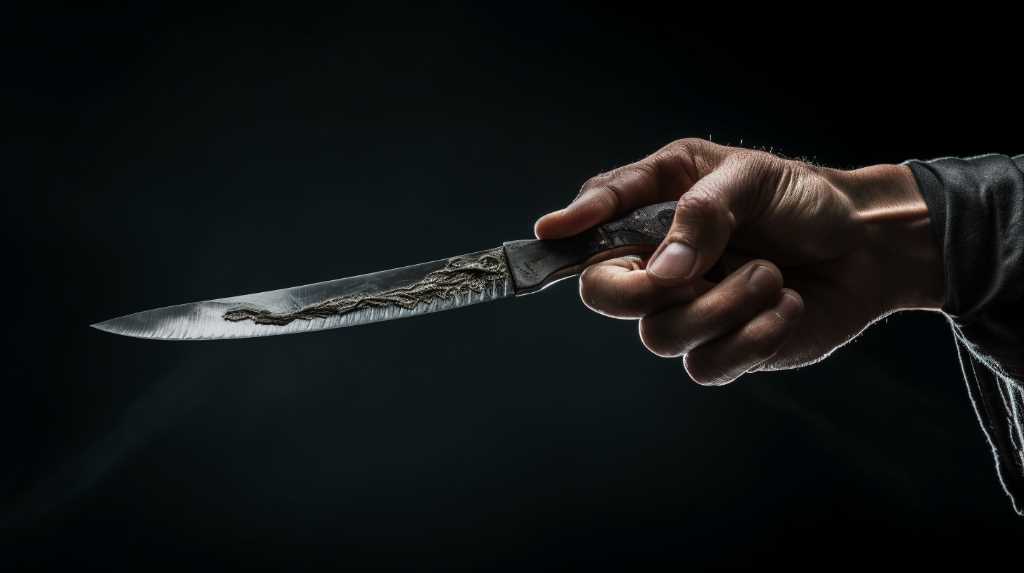
Throwers must be cautious of knives with improper balance, as they can impede accuracy and throw off the stability of the knife during flight.
The balance of a throwing knife is crucial for achieving consistent and accurate throws. When a knife is poorly balanced, it can lead to erratic flight patterns and decreased accuracy. The weight distribution should be evenly distributed from the tip to the handle, allowing for a smooth and predictable path through the air.
An imbalanced knife can also affect the stability during flight, making it harder to control and increasing the chances of injury. To ensure proper balance, throwers should carefully consider the design and construction of the knife, paying attention to weight distribution and materials used.
Lightweight Handles
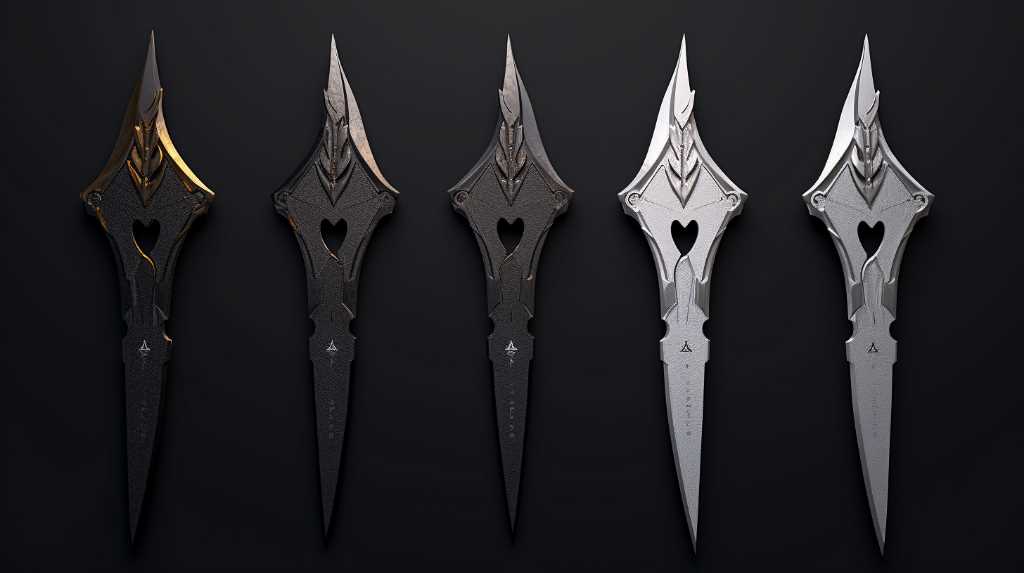
When selecting a throwing knife, throwers should consider knives with lightweight handles, as they can improve maneuverability and reduce fatigue during extended throwing sessions. Lightweight handles are designed to enhance the overall balance of the knife, making it easier to control and throw accurately. The reduced weight allows for quicker and more precise movements, increasing the chances of hitting the target with precision.
Additionally, lightweight handles can significantly reduce fatigue, especially during long throwing sessions, as they require less effort to manipulate. This is particularly important for throwers who engage in competitions or practice for extended periods. By choosing a knife with a lightweight handle, throwers can experience improved control, accuracy, and endurance, ultimately enhancing their throwing skills and performance.
Therefore, it is crucial for throwers to prioritize the weight of the handle when selecting a throwing knife.
Blunt Tips
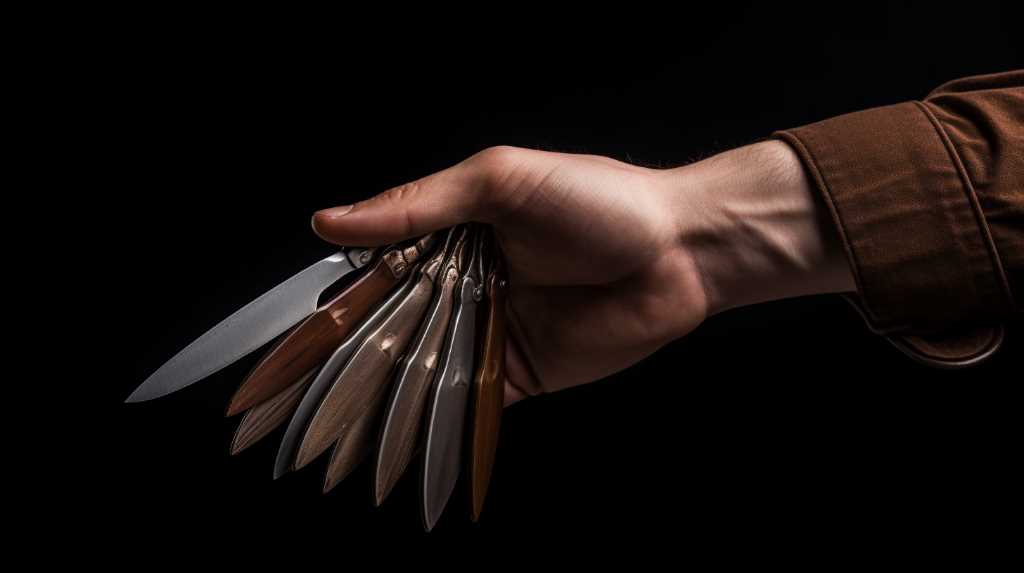
One should be cautious when handling knives with blunt tips, as they may not penetrate the target as effectively, potentially compromising accuracy and performance.
The tip of a knife plays a crucial role in its functionality, especially in the context of throwing knives. A sharp, pointed tip allows for better target penetration, ensuring that the knife sticks firmly into the intended surface.
In contrast, a blunt tip can hinder the knife's ability to pierce through the target, resulting in reduced accuracy and performance. This can be particularly problematic for individuals who engage in knife throwing as a sport or hobby, where precision and consistency are paramount.
Therefore, it is advisable to choose throwing knives with sharp, well-defined tips to maximize accuracy and optimize performance. By doing so, enthusiasts can enhance their throwing skills, ultimately achieving liberation and mastery over this art form.
Poorly Constructed Blades
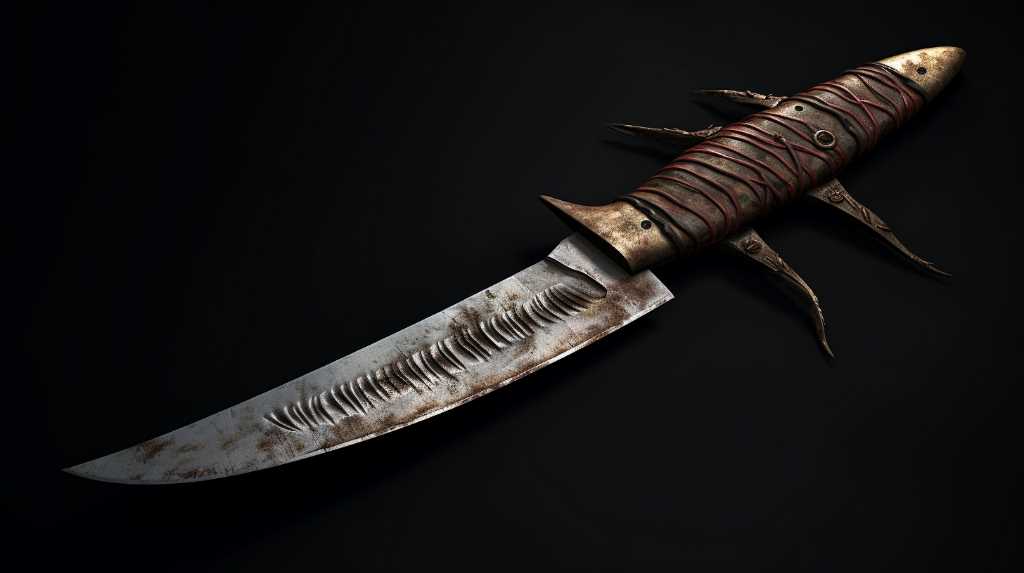
Several factors contribute to the ineffectiveness of poorly constructed blades, including inadequate material quality and subpar craftsmanship. When it comes to throwing knives, the quality of the blade can make all the difference between success and failure. Here are five common mistakes to avoid in throwing knife selection:
- Choosing blades made from low-quality steel, which can lead to premature dulling and breakage.
- Neglecting to check the blade's balance, resulting in poor flight and accuracy.
- Overlooking proper weight distribution, causing the knife to spin irregularly and miss the target.
- Ignoring the importance of a secure handle, which can lead to accidents and injuries.
- Failing to consider the blade's thickness, as thinner blades are more prone to bending and breaking upon impact.
Frequently Asked Questions
What Are Some Potential Risks or Dangers of Using Oversized Knives in Throwing Knife Competitions?
Using oversized knives in throwing knife competitions can pose potential risks and dangers. These include reduced accuracy, difficulty in handling and controlling the knife, increased chance of injury to the thrower and others, and potential damage to the target or surroundings.
How Can Improper Balance in Throwing Knives Affect Accuracy and Performance?
Improper balance in throwing knives can significantly impact accuracy and performance. Similar to a tightrope walker with an unbalanced pole, the weight distribution must be precise to ensure the knife's trajectory and stability during flight.
What Are the Advantages and Disadvantages of Using Lightweight Handles in Throwing Knives?
Lightweight handles in throwing knives offer increased maneuverability and reduced fatigue during throwing. However, they may compromise durability and stability, resulting in less control and accuracy. Proper balance is crucial in selecting the right handle weight for optimal performance.
Are Blunt-Tipped Throwing Knives Suitable for Beginners or Should They Be Avoided Altogether?
Blunt-tipped throwing knives can be suitable for beginners due to their reduced risk of injury. However, they may hinder the development of accurate throwing technique and limit the range of targets that can be effectively hit.
How Can One Identify and Avoid Poorly Constructed Blades When Selecting Throwing Knives?
When selecting throwing knives, it is crucial to identify and avoid poorly constructed blades. This can be done by closely examining the blade material, construction technique, weight distribution, and balance of the knife.
Conclusion
In conclusion, selecting the right throwing knife requires careful consideration to avoid common mistakes.
Oversized knives can hinder accuracy and control, while improper balance can affect the trajectory of the throw.
Lightweight handles may compromise stability and control during the throw.
Blunt tips hinder penetration and reduce effectiveness, while poorly constructed blades can break or bend easily.
By avoiding these mistakes and choosing a well-designed throwing knife, one can enhance their throwing skills and achieve better results.

